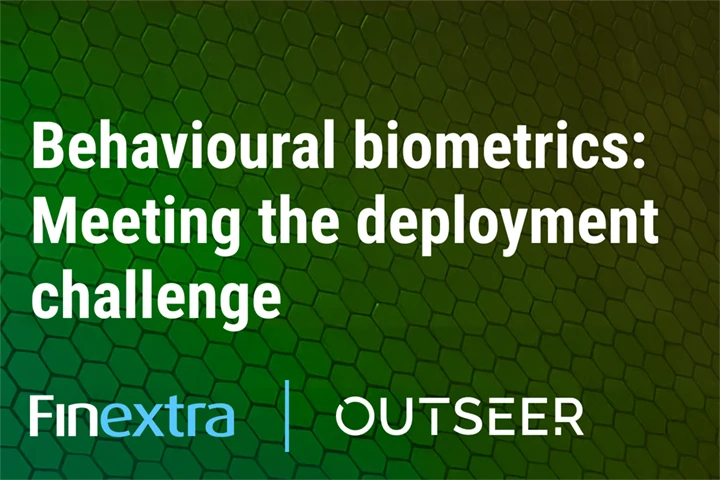The only thing digital transformation has changed over the past 18 months is … everything. How we live, how we shop, who we trust—it’s all being reshaped by market forces and digital innovation. But as the pace of change and consumer demands accelerate, organizations need to be prepared for the potential risks and profound challenges that come with them.
By now, it seems most people in the payments space have come to understand that advances in machine learning and data science are the answer. But most still have questions about why it’s so important, how it works, and which approaches are best for protecting against fraud?
With that in mind, I figured I’d share some of the kinds of questions put to me recently, in hopes my answers can provide some helpful insight.
What sectors are most at risk of fraud; is it only payments, or are there other forms of fraud to look out for?
Cybercriminals are opportunists, and they always follow the money. With consumer adoption of digital channels leading to $1 trillion growth in ecommerce and digital banking, fraudsters are particularly focused on exploiting applications that are newer to the market.
Think digital wallets, Buy Now Pay Later (BNPL), peer-to-peer (P2P) payments, as well as applications that have been around for a while—like card-not-present (CNP) and bank transfer fraud. Consumers love the speed, ease, and convenience these services offer. Which means organizations must find ways to deliver the fast, frictionless transaction experience consumers demand without sacrificing security.
These trends are most pronounced in ecommerce, obviously, where CNP transactions are essential. Increasingly, however, embedded finance is coming to the fore. According to Adobe, the number of people choosing BNPL for online purchases rose 215% from early 2020 to early 2021. Because these payment methods are still very much in their infancy, issuers and brands alike are navigating the associated fraud risk.
Brand abuse is also on the rise. In these attacks, fraudsters impersonate trusted brands and banks in bogus social media pages, phishing emails, and malicious mobile banking apps aimed at stealing credentials or achieving account takeover. As documented in our latest fraud trends report, brand abuse now factors into the majority of all fraud attacks—growing 68% in just 90 days.
How is machine learning used to detect and stop fraud?
When you’re talking about the scale and sophistication of attacks financial services organizations are seeing, machine learning and big data analytics are required to identify fraudulent transactions.
Traditional fraud detection systems are rules-based, which means they’re always fighting yesterday’s battle based on established and recognizable threats. Machine learning can dive far deeper, working to understand the complex interactions that occur prior to an attack. Assessing the context for a transaction and the relationships associated with it are absolutely key.
While the information in question depends on the suspicious behavior itself, machine learning is able to examine numerous variables—such as the type of payment being made, the origin of the payment, whether the payment is consistent with previous transactions from that particular user—along with hundreds more, in real time. Machine learning helps anti-fraud systems learn and remember various behaviors and user attributes so that they can be prepared for the eventuality of a fraudulent transaction in the future.
Is this purely a cost center, or does it provide enough value-add to attract and retain customers?
As cybercriminals become more sophisticated, we must too. To address fraud risk in a way that’s not just acceptable but is actually delightful to end users, you have to invest in tools and solutions that are powered by modern machine learning and a very high level of data science expertise.
Here’s why. Machine learning algorithms and the risk scores they generate are only as good as the experts who train them, and the quality and scale of the underlying dataset that informs them. When your anti-fraud systems are able to effortlessly prevent 95% of all fraud loss and reserve step-up challenges for only those scant 5% of transactions that may require additional scrutiny, customers enjoy a fast, friendly transaction experience. The absence of that is noticeable and unforgivable to fickle consumers, who’ve been shown to bail on a transaction after even just a few seconds of friction.
As a result, look for card issuers, banks, and other payments providers to prioritize solutions that combine machine learning and data science with the kind of global, cross-industry intelligence needed to recognize threats before a transaction even begins. And that means card issuers experience more “top-of-wallet” loyalty when consumers make purchases, leading to more revenue for banks and card networks. And higher approval rates means more legitimate transactions get completed successfully, leading to higher revenues for merchants and more interchange fees for issuers.
Add it all up, and you’re talking about a huge value-add that can only be achieved with machine learning and data science.
To take a deep dive into how data science and machine learning are leveraged to payment fraud, download our eBook “Outseer Risk Engine: More Fraud Detection, Less Intervention“.












